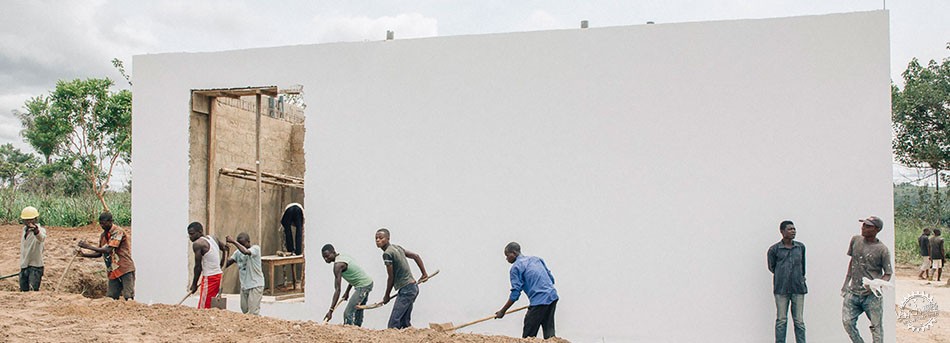
OMA在刚果设计的“白色立方”画廊突显了种植园工作者的困境
OMA-designed 'white cube' gallery in DR Congo highlights the plight of plantation workers
由专筑网缕夕,李韧编译
OMA事务所设计的白色立方体建筑已在刚果民主共和国的联合利华种植园施工。该项目位于国家首都东南部650公里的卢桑加,目的是为了吸引更多的资金支持和提高种植园工人回购土地的意识,同时开发新的经济和生态模式。开幕典礼也标志着五年研究计划的开始。
A quintessential white cube designed by OMA has been inaugurated on a former unilever plantation in the democratic republic of the Congo. Located in Lusanga, a town 650 kilometers southeast of the country’s capital, the institution seeks to attract both the financial backing, and the awareness needed for plantation workers to buy back land and develop a new economic and ecological model. The inauguration also marks the start of a five-year research program.
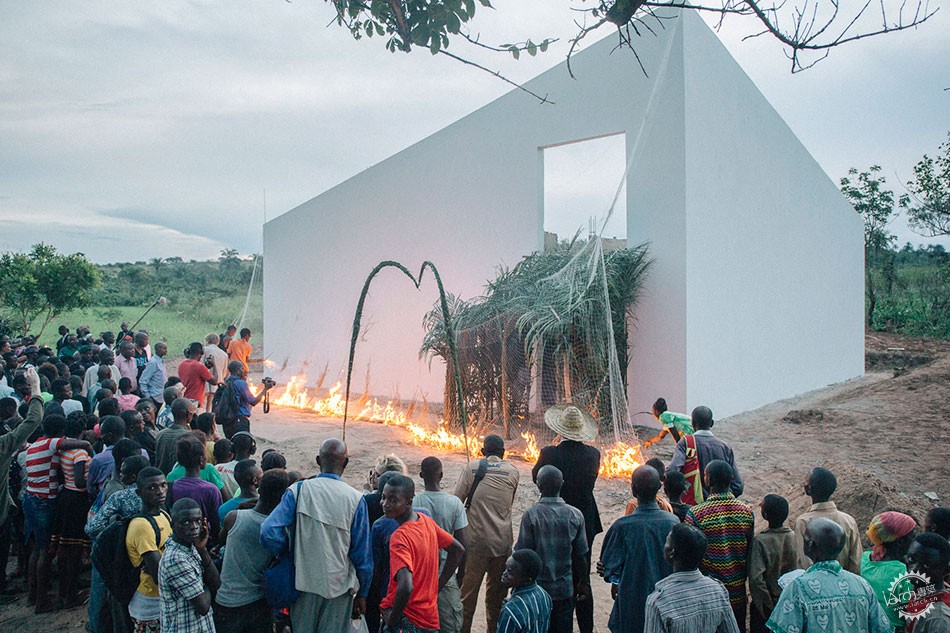
OMA设计的白色立方体/The repatriation of the OMA-designed white cube. image © Thomas Nolf (also main image)
OMA 事务所设计的“白色立方体”是卢桑加国际艺术和经济不平等研究中心(LIRCAEI)的核心部分。研究中心致力于将以前的种植园转化至“艺术批判,美与生态多样性”领域。LIRCAEI是种植园工人合作社协会(刚果种植园工人艺术联盟或CATPC)和艺术家Amsterdam的阿姆斯特丹人类活动研究所(IHA)的合作产物。
The OMA-designed ‘white cube’ is the centerpiece of the Lusanga international research centre for art and economic inequality (LIRCAEI). The research center is dedicated to the transformation of former plantation spaces into areas for artistic critique and ecological diversity. LIRCAEI is a joint initiative of the plantation workers’ cooperative Cercle d’art des travailleurs de plantation Congolaise (Congolese plantation workers art league, or CATPC) and artist Renzo Martens’s Amsterdam-based institute for human activities (IHA).
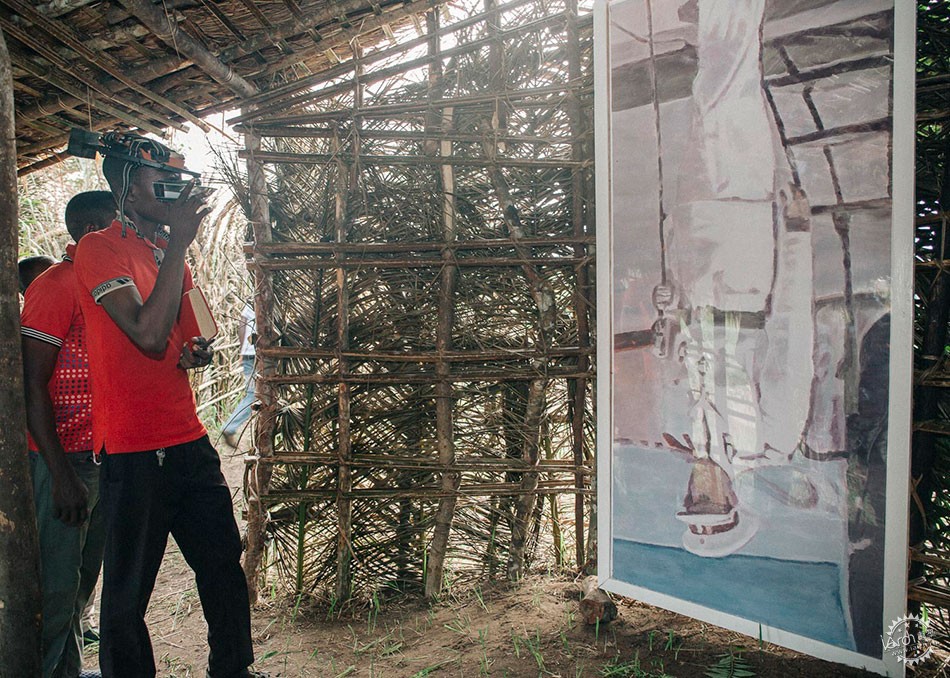
参观者通过卡斯特•奥莱的“颠倒的护目镜” 画像看到画家卢克•杜曼斯的“mwana kitoko” /A visitor seeing luc tuymans’ ‘mwana kitoko’ through carsten höller’s ‘upside down goggles’. image © Thomas Nolf
虽然CATPC的成员是种植园工作者,但他们也是使用各种不同材料(包括可可)制作雕塑的艺术家。销售雕塑所产生的所有利润都回收到当地的种植园,那里有越来越多的实验性的、社区拥有的可可和棕榈油花园需要人们去建立。该计划的目的是保留社区利益,回购土地,资助经济进一步发展。
Although the members of CATPC are plantation workers, they are also artists who create sculptures from a range of different materials, including cocoa. All profits made from the sale of the sculptures are funneled back into local plantations, where more and more experimental, community-owned cocoa and palm oil gardens are being established. The aim of the initiative is to retain profits within the community, buy back land, and finance further development.
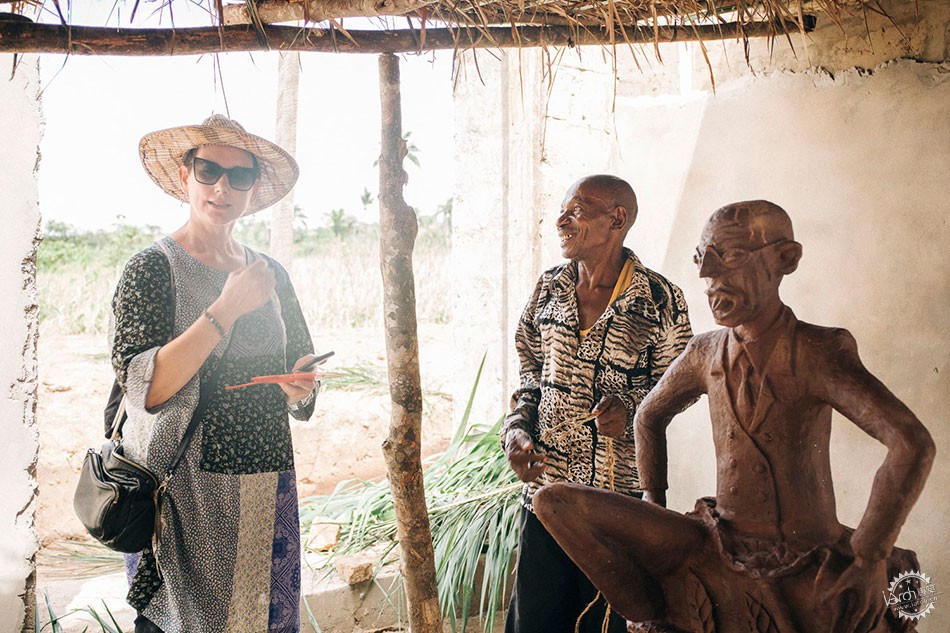
Clementine Deliss和Jeremie Mabiala讨论白色立方体图像内的“艺术收藏家”/Clementine Deliss and Jeremie Mabiala discussing ‘the art collector’ inside the white cube. image © Thomas Nolf
随着LIRCAEI的建立,“白色立方体”作为现代艺术博物馆类型学的象征,已被完全重新构建。LIRCAEI称,种植园资助了许多欧洲和美国工业建筑以及著名博物馆和大学的建设。该项目旨在克服种植园生态系统的非自然因素和创造白色立方体的无菌性。
With the establishment of LIRCAEI, the ‘white cube’ — a symbol of the modernist art museum typology — has been completely recontextualized. LIRCAEI asserts that plantations have funded the building of many european and american industries, as well as prestigious museums and universities. By juxtaposing the violence familiar to many plantation zones with the civility of art galleries, the project aims to overcome both the exhaustive nature of the plantation system and the sterility of the class-dividing white cube.
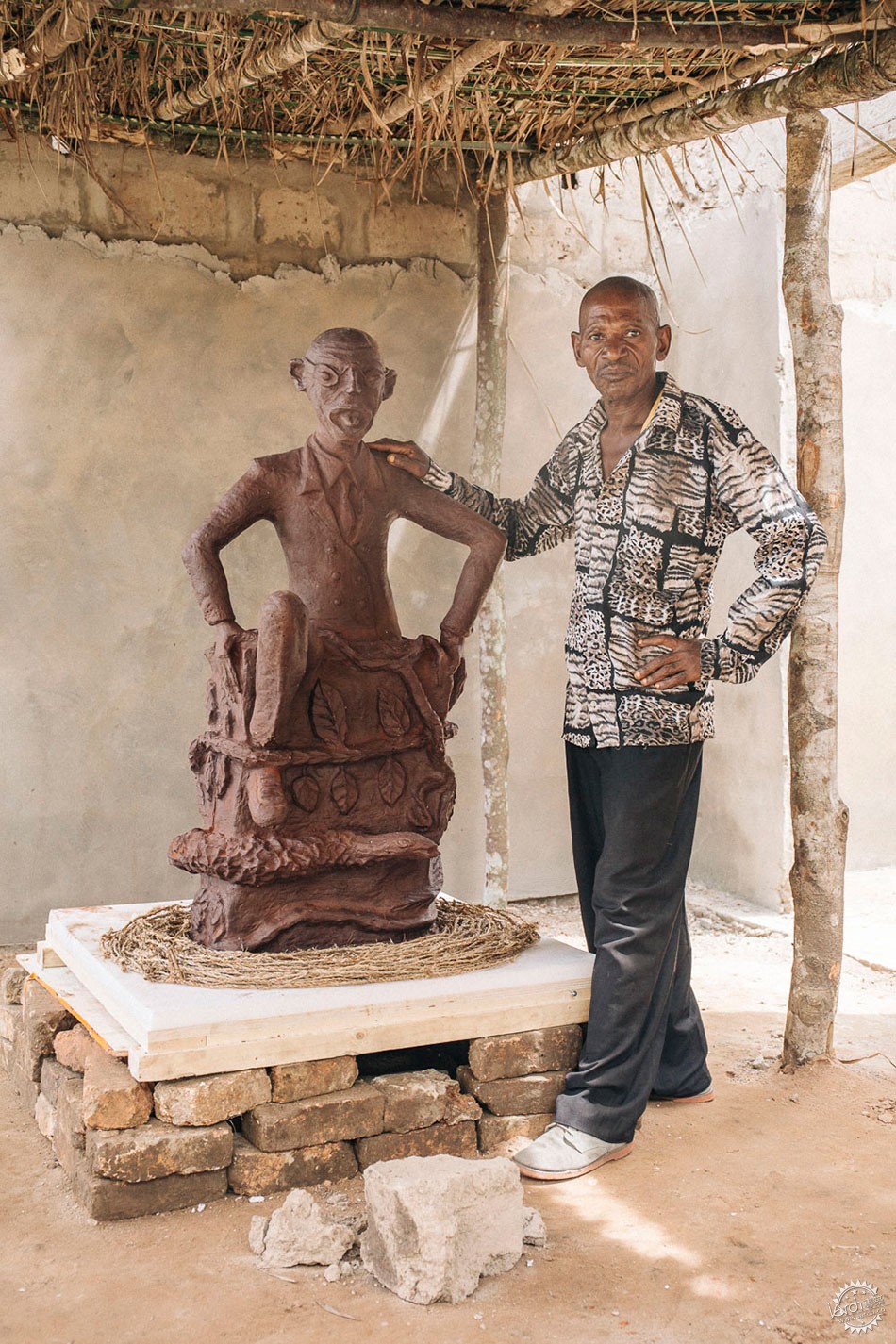
CATPC艺术家Jeremie Mabiala和白色立方体里的“艺术收藏家” /CATPC artist Jeremie Mabiala and ‘the art collector’ inside the white cube. image © Thomas Nolf
为了庆祝研究计划的开幕,CATPC正在策划一个展览,主要研究艺术、生态和经济三者之间的相互联系。除了当地CATPC成员的作品,展览还包括来自刚果和国际著名艺术家的贡献作品。白色的立方体中还包括一个互联网平台,在这里人们将全球种植园和博物馆联系起来。在今后五年中,该项目将致力于调查世界种植园工作者的未来愿景。
To celebrate the opening of the research program, CATPC is curating an exhibition that looks at the interconnectedness of art, ecology, and the economy. In addition to works by local CATPC members, the display includes contributions from prominent Congolese and international artists. The white cube also includes an internet platform that connects its research to plantations and museums worldwide. Over the next five years, the program will investigate strategies of resistance alongside future visions for the world’s plantation workers.
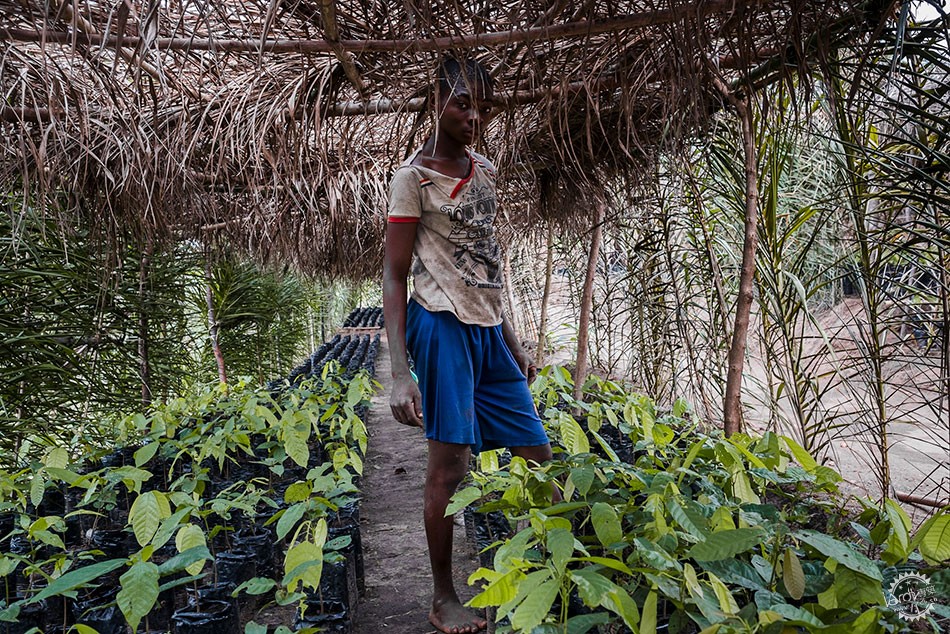
该生态园由CATPC巧克力雕塑的销售用以集资/The inclusive and ecological plantation has been financed by the sales of CATPC’s chocolate sculptures. image © Léonard Pongo
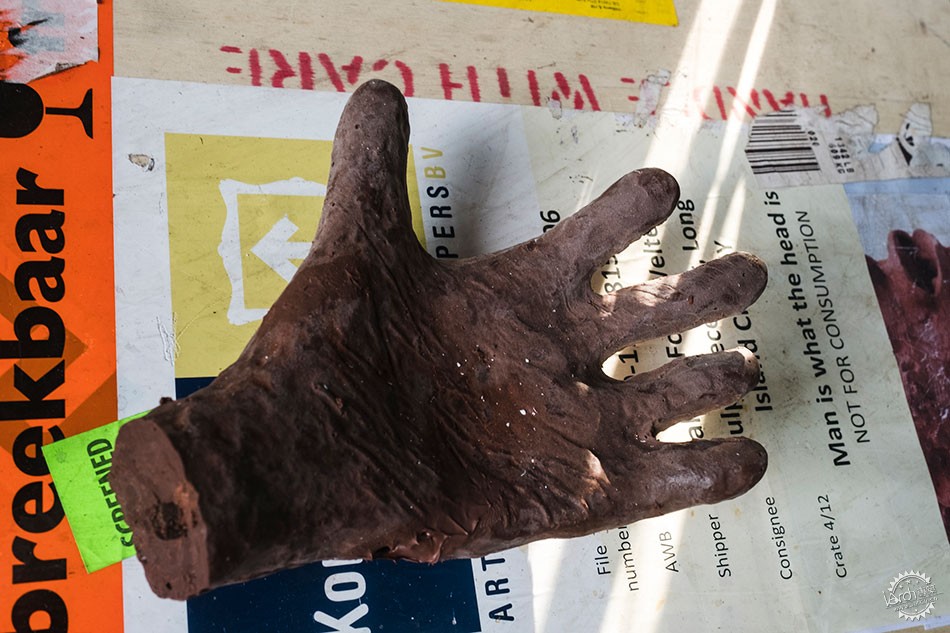
一个巧克力手在等待它的首次展览/A chocolate hand waiting to be fixed to a CATPC sculpture at the inaugural exhibition. image © Léonard Pongo
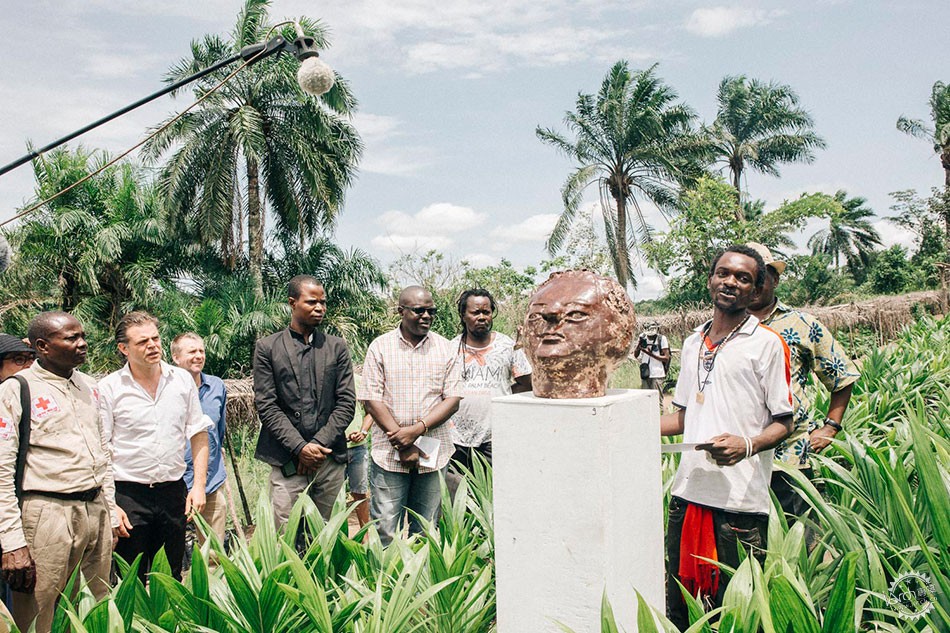
CATPC艺术家Cedrick Tamasala解释巧克力雕塑如何为种植园集资/CATPC artist Cedrick Tamasala explaining how the chocolate sculptures finance the post plantation. image © Thomas Nolf
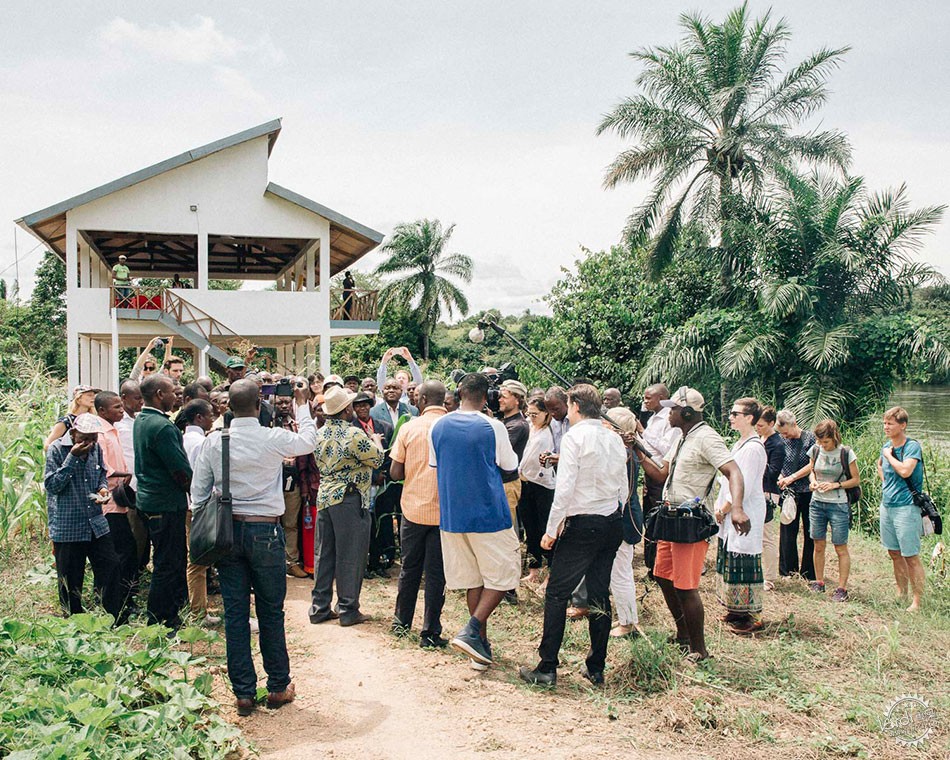
另外一个会议中心也是由OMA 事务所设计/A separate conference centre has also been designed by OMA. image © Thomas Nolf

Suhail Malik在LIRCAEI的会议中心阐述当代艺术价值链/Suhail malik elucidating on contemporary art’s value chains at LIRCAEI’s conference centre. image © Léonard Pongo
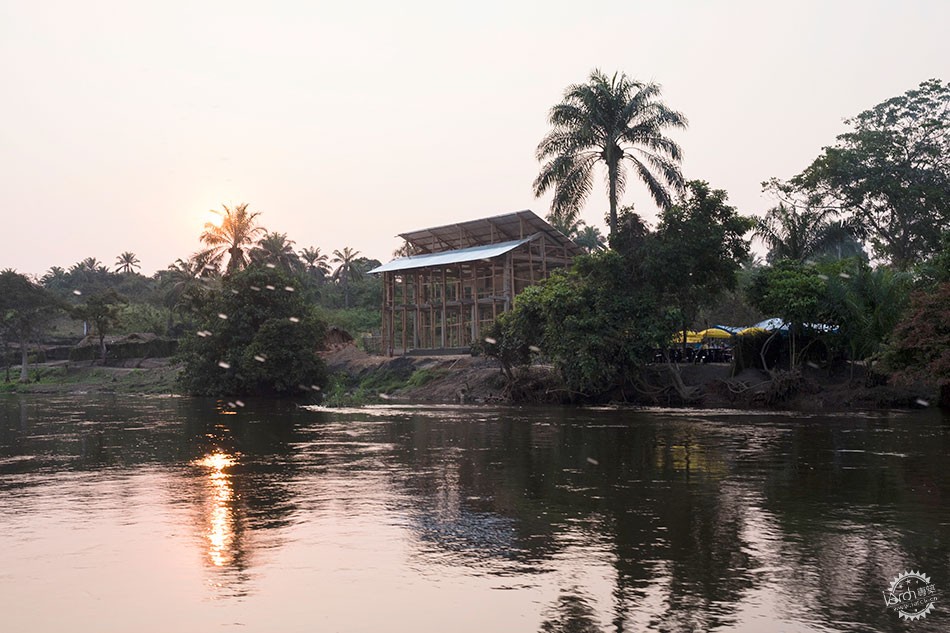
从Kwenge河看OMA事务所设计的会议中心(在建) /The OMA-designed conference center under construction, view from Kwenge river.
image © Léonard Pongo
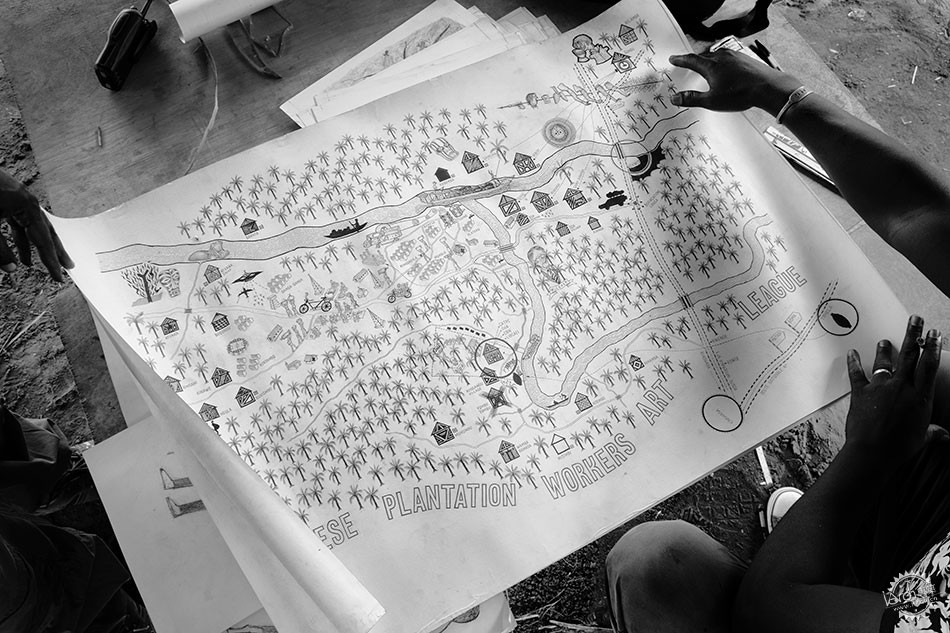
image © léonard pongo
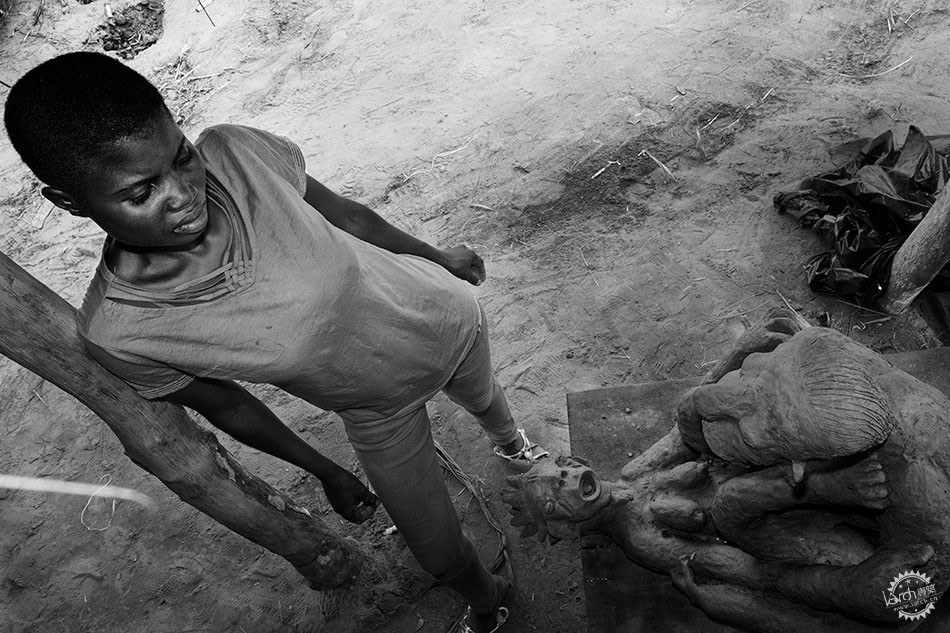
image © léonard pongo
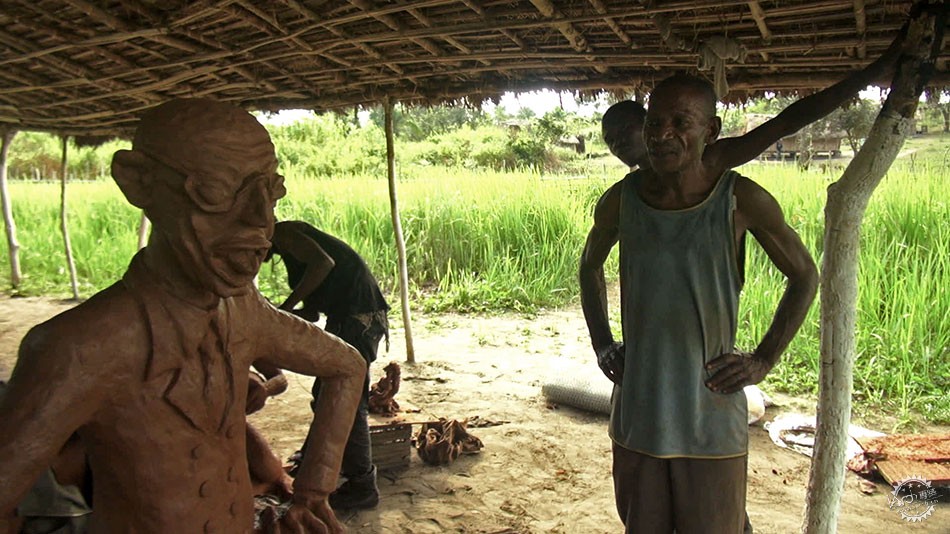
image © IHA
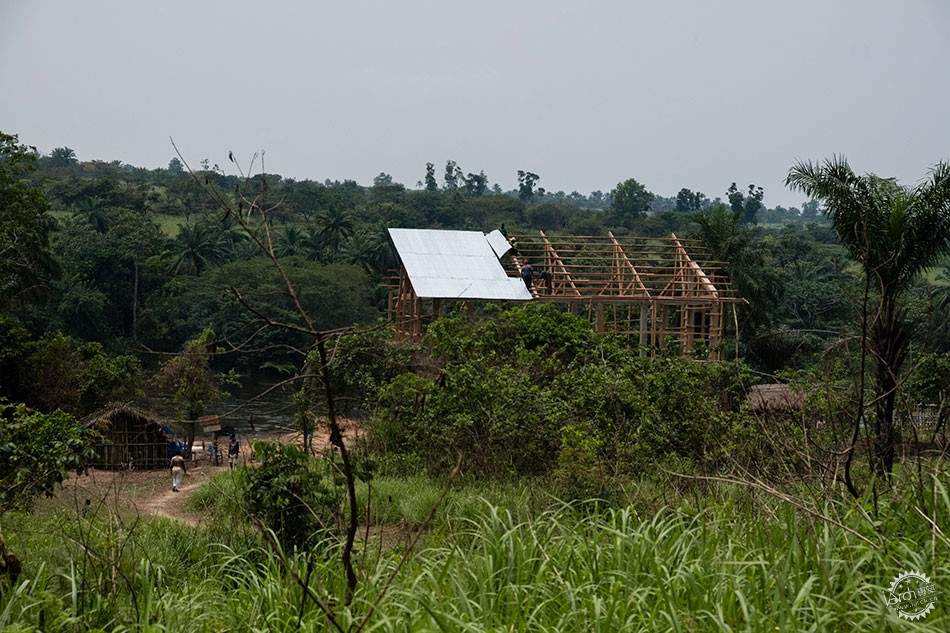
image © léonard pongo
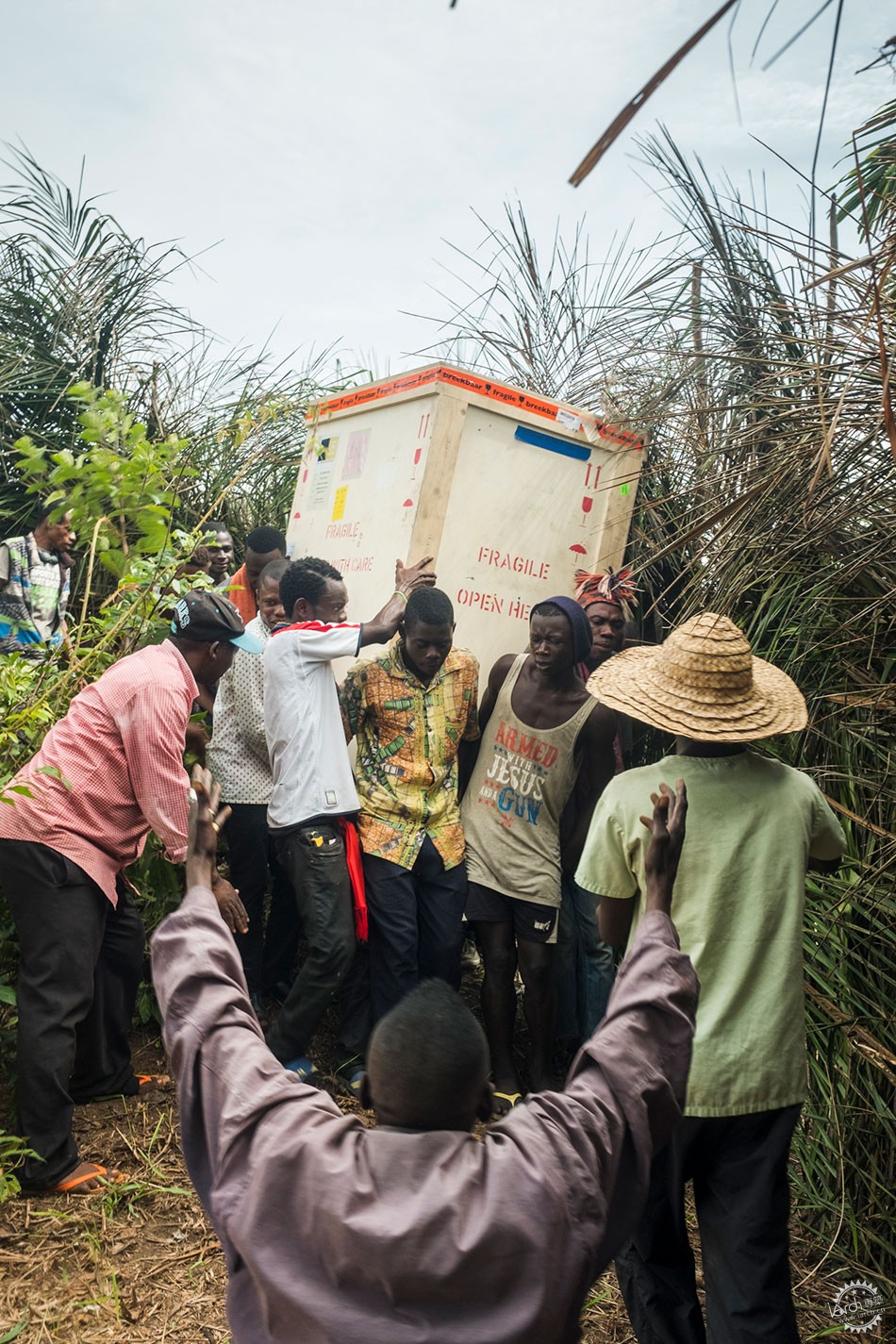
image © thomas nolf
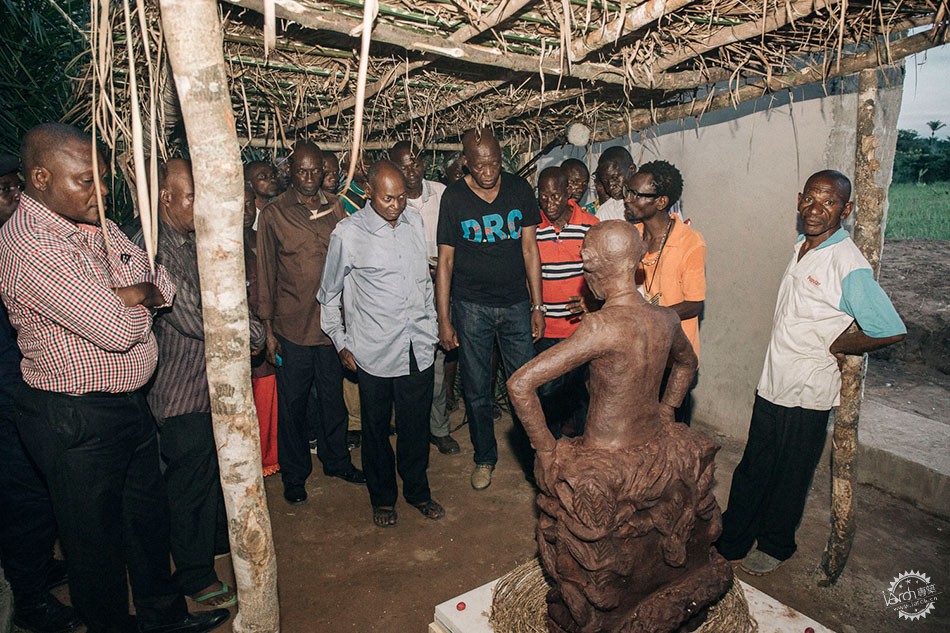
image © thomas nolf
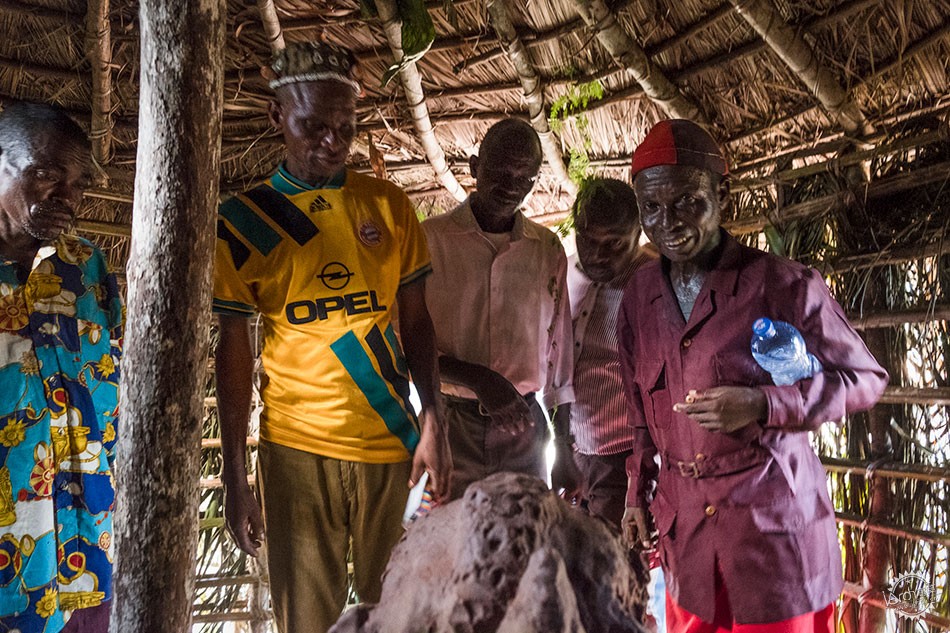
image © léonard pongo
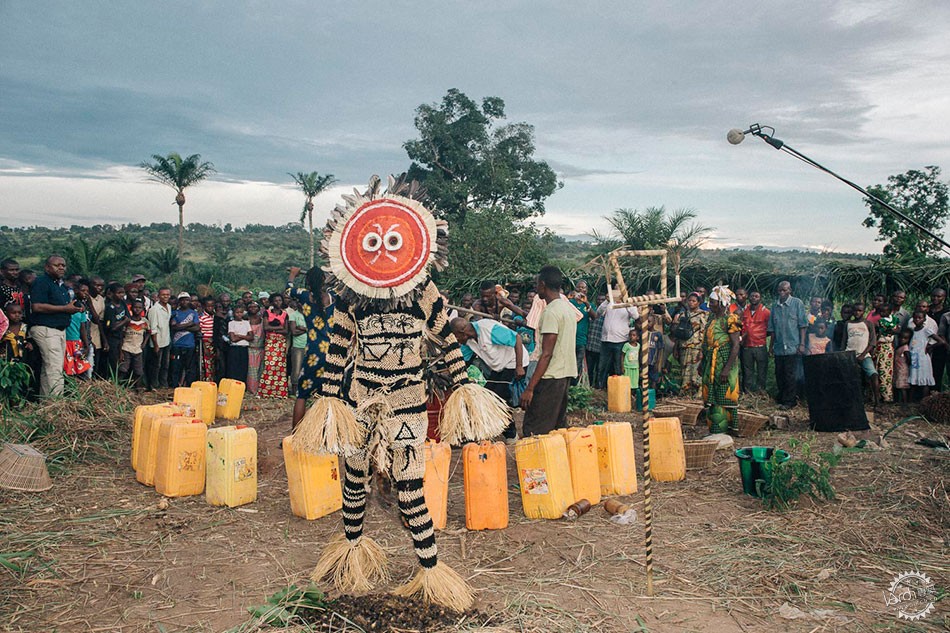
image © thomas nolf
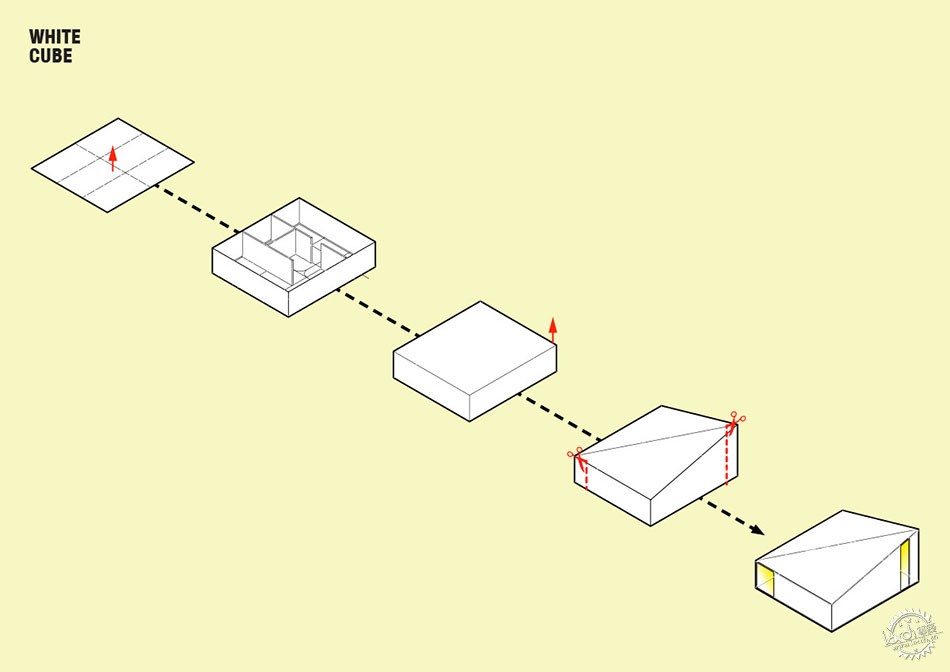
正常发展/formal development. image © OMA
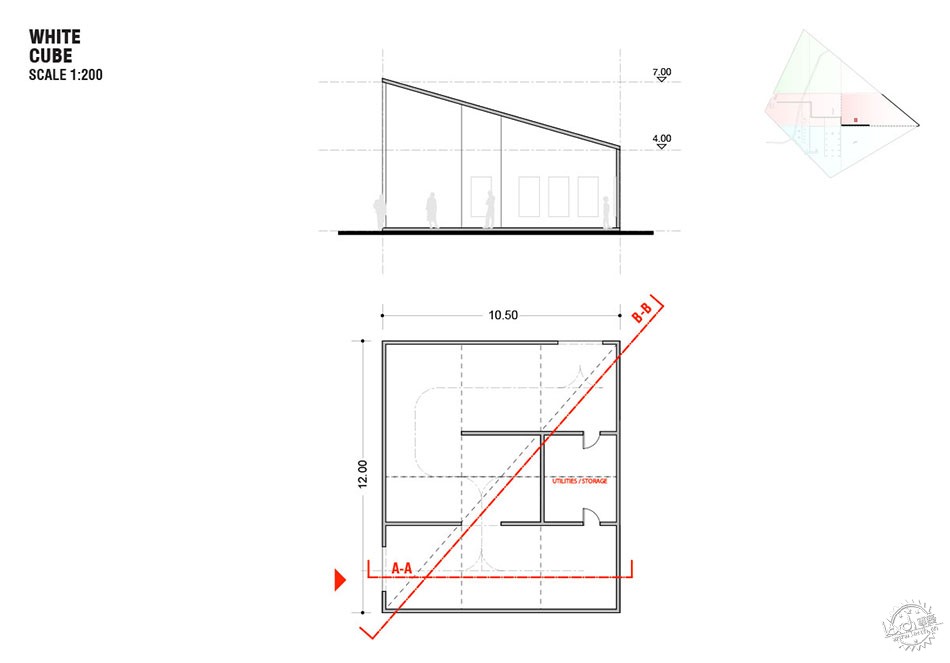
剖面图+平面图/section + floor plan. image © OMA
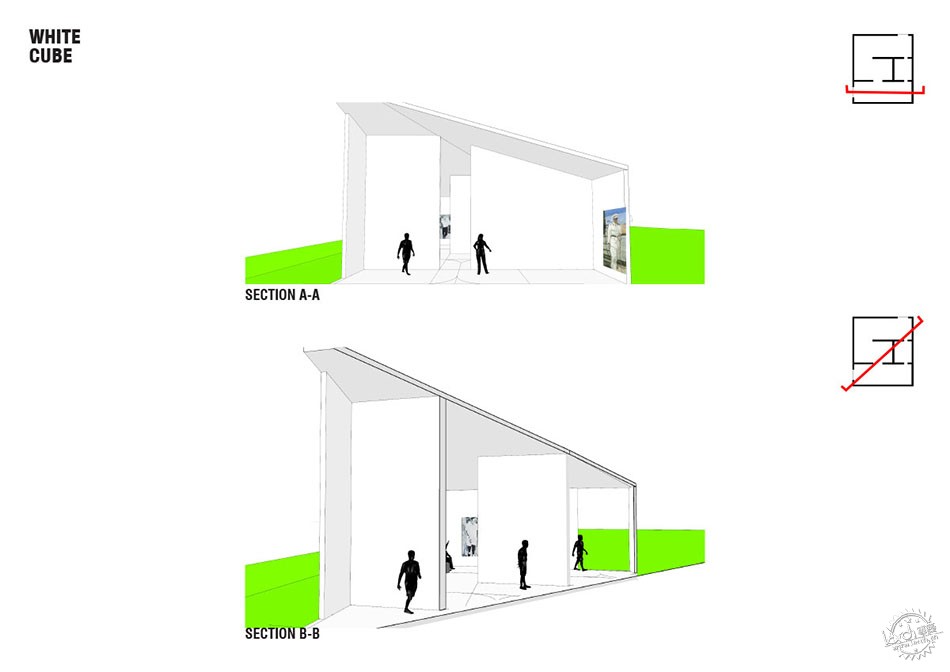
剖面图/sections. image © OMA
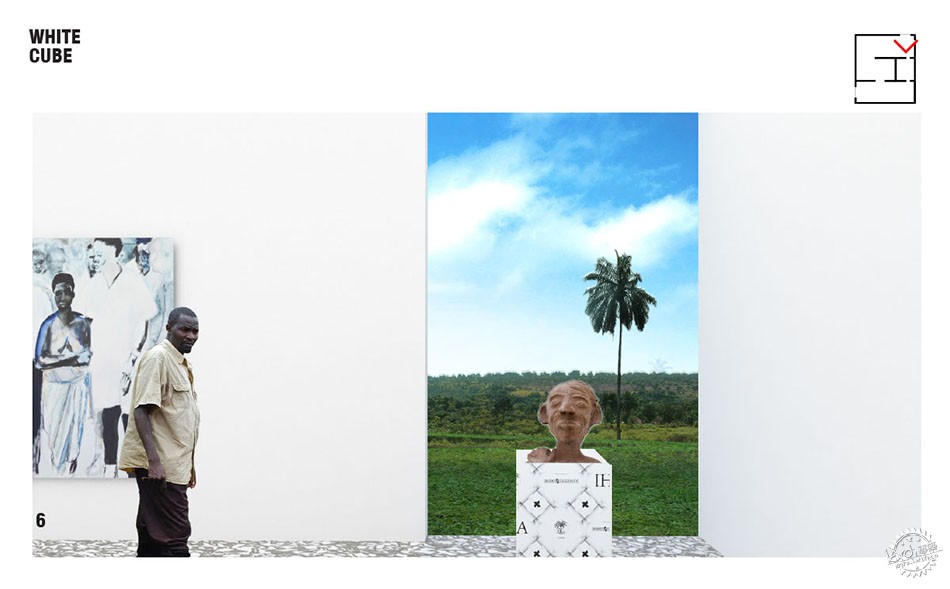
概念渲染/concept rendering. image © OMA
出处:本文译自www.designboom.com/,转载请注明出处。
|
|
专于设计,筑就未来
无论您身在何方;无论您作品规模大小;无论您是否已在设计等相关领域小有名气;无论您是否已成功求学、步入职业设计师队伍;只要你有想法、有创意、有能力,专筑网都愿为您提供一个展示自己的舞台
投稿邮箱:submit@iarch.cn 如何向专筑投稿?
